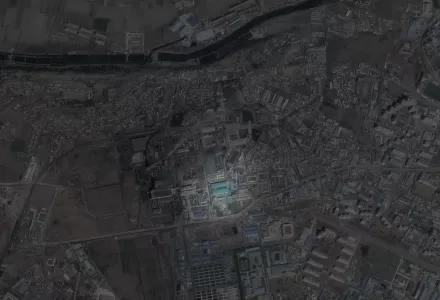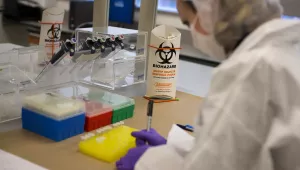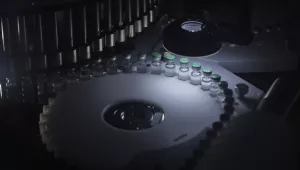
Introduction
Amidst the growing threat of North Korea’s nuclear program, the assassination of Kim Jong-Un’s half-brother via VX nerve agent in February 2017 brought renewed interest in North Korea’s other weapons of mass destruction (WMD) programs—chemical and biological weapons. If used on a large scale, these weapons can cause not only tens of thousands of deaths, but also create panic and paralyze societies. Nevertheless, the vividness of the nuclear threat has overshadowed other weapons programs, limiting the attention and policy input that they deserve. This paper focuses on North Korea’s biological weapons (BW).
Accurately assessing the threat from North Korea’s biological weapons is challenging. Whereas North Korea has publicly declared its will to become a nuclear power many times, it has been less overt about its intention or capability for biological weapons. BW capabilities are inherently hard to detect and measure. While nuclear programs can be monitored by the number of nuclear tests and the success of missile tests, weaponizing and cultivating pathogens can stay invisible behind closed doors. Moreover, equipment used for BW production are often dual-use for agriculture, making external monitoring and verification virtually impossible. Limited information on North Korea’s BW program leads to a low threat perception that may undermine preparation and response efforts.
Nonetheless, preparation against BW is urgent and necessary, which will also serve as defense against naturally occurring epidemics that increasingly threaten the 21st century. Military and public health sectors should cooperate to urgently prepare for “dual-response” mechanisms. Components of a well-established “dual-response” program should include the best possible threat assessment by military and intelligence communities, a strong public health detection and response system, a well-coordinated crisis communication strategy among multiple stakeholders, and compliance from an informed public.
In this paper, we examine the state of knowledge on North Korea’s BW program. Current literature describes North Korea’s BW program with mixed levels of credibility. Using publicly available information, including articles, books, governmental and non-governmental reports, as well as interviews with subject matter experts and former government officials, the authors map the known and unknowns of North Korea’s BW program.
Second, we examine where policy on North Korea’s BW stands. We focus our analysis on the policies of South Korea and the United States, rather than at an international level, as North Korea has had limited participation in the Biological Weapons Convention (BWC).
Lastly, we present recommendations on how to improve assessment and surveillance of North Korea’s BW program, especially with new technologies, and how to improve current policies regarding North Korea’s BW program.
Philipp, Elizabeth, Hyun-Kyung Kim and Hattie Chung. “North Korea’s Biological Weapons Program: The Known and Unknown.” Belfer Center for Science and International Affairs, Harvard Kennedy School, October 2017




